Ertach Kernow - Porthcurno. Centre of the worlds communications
Porthcurno. Centre of the worlds communications is not an exaggeration. Someone mentioned this week about a television programme they’d seen about Porthcurno and how they hadn’t mentioned the museum there. How could they not? A couple of years before the pandemic and lockdown hit us limited our travels, I had a very enjoyable day out to Porthcurno including the museum. This was undergoing some renovation and our Newquay Museum site at Dairyland had the opportunity of obtaining some older but very useful large display cases from them. A good opportunity and excuse for a day out although perhaps somewhere to visit out of the peak weeks of summer, but well worth a visit.
Located on the south coast of the Penwith peninsula close to Land’s End Porthcurno is a small village in the parish of St Levan. Other small settlements within the area include St Leven itself, Porthgwarra, Penberth and Treen. Apart from wonderful coastal views, countryside and beaches maybe nothing much else to speak of if not for the PK Museum and the now famous Minack Theatre. To be fair the Porthcurno area does have evidence of an ancient past, with indications of settlement and occupation from the Mesolithic and Neolithic Stone Age periods. Close by is Treryn Dinas, an Iron Age promontory fort, with its three sets of ramparts and ditches along with the famous logan stone on the granite coastal headland. First mentioned as Porthe Cornewe in 1582, a settlement on the edge of today’s village was recorded as early as 1327 as Bodelen. The name later spelt Bodellan just survives now as a farmhouse, the only building seen on the 1841 tithe map covering the current Porthcorno village. The Ordnance Survey of c1875 has no mention of Porthcurno, apart from the beach, still emphasising Bodellan although the extensive Eastern Company Telegraph Station is shown on the map along with few other buildings. By the early 20th century Ordnance Survey, the name Porethcurno has come to the fore and showing the beginnings of today’s village with numerous buildings dwarfing the historic churchtown of St Levan after which the parish is named.
The growth in telegraphic communication during the later 19th century was for Britain with its vast empire a huge advantage. A message to India would take up to six weeks, telegraphy allowed messages to be sent and received in just nine minutes. The Falmouth Packet Service of sailing ships carrying messages throughout the world had been established in 1689. However, by 1851 this service had been ended through increased use of steam vessels that did not have to use Falmouth as a base. In turn within a further two decades telegraphy became the new method of sharing information over long distances. It was this transformation of communication which would establish Porthcurno as an unlikely communication centre located remotely on the south Cornish coast.
Establishment of the Eastern Company’s Telegraph Station in 1870 was the began Porthcurno’s as a place of national recognition. By then telegraphy was not a totally new concept having been introduced to Britain in 1837. By 1840 issues relating to the submergence of cable had largely been overcome, albeit not totally with continued failed attempts, but in 1851 a cable linking Britain and France had been successfully laid and operational. During the 1850 and 1860 many cables we laid, not always successful in delivering a stable connection, but establishing links via the Atlantic Ocean. In 1869 a cable was laid from Land’s End to the Isles of Scilly, sadly this failed. A year later connections via a cable between Porthcurno and HMS Brisk some 40 miles offshore, who would pass flag signals to vessels entering the English Channel, was established. This later failed due to cable breakages and seasickness amongst the signallers. On 8th June 1870 John Pender’s ‘Falmouth, Gibraltar and Malta Telegraph Company’ successfully completed the Carcavelos in Portugal to Porthcurno cable, the first success at this site. Initially Falmouth had been considered but then been ruled out due to heavy harbour traffic. With this company’s existing links to Gibraltar and Malta connectivity from Britain via Porthcurno was spreading further eastwards. In 1872 Pender founded the Eastern Telegraph Company, which was to become the largest cable operating company in the world, and this absorbed his other cable interests.
In 1873 the Porthcurno to Vigo Spain cable was laid by the new Eastern Telegraph Company. A cable laid by the Direct Spanish Telegraph Co going from The Lizard to Bilbao was redirected to Falmouth and finally Porthcurno and taken over by the Eastern Telegraph Company in 1884. St Mary’s in the Isles of Scilly was finally connected in 1886. Besides new cables existing ones needed repairing and upgrading to establish better and faster lines of communication and able to take greater numbers of messages. The Eastern Telegraph Company was also taking over other companies as well as cables laid by other foreign companies. The ongoing increase in the worldwide cables being laid and telegraph station being constructed including islands such as St Vincent and Ascension Island. The outbreak of the Boer War in 1899 benefited the Eastern Telegraph Company allowing it to expand through the laying of cables to link Cape Town, St. Helena, Ascension Island, St. Vincent and Cape Verde Islands. All of these places saw extensive construction of telegraph stations. Through these connections Porthcurno’s connectivity extended far over the Eastern network. 1902 saw the Eastern Telegraph Company and The Eastern Extension, Australasia & China Telegraph Company merging to form The Eastern & Associated Telegraph Companies once again absorbing a number of other smaller companies.
Technology is ever moving forward and soon cable based telegraphy had a competitor. January 1902 had seen Guglielmo Marconi send morse code messages across the Atlantic Ocean from the Lizard Peninsula, avoiding the expense of laying cables. There was so much concern that this rival technology could eclipse their own. The Eastern Telegraph Company at Porthcurno employed Nevil Maskelyne an expert in wireless telegraphy to help undermine Marconi’s apparent success. In an early case of hacking, they intercepted and recorded private messages sent by Marconi. They also interrupted a live public broadcast by the electrical engineer Sir John Ambrose Fleming with vulgar messages. So not only was wireless a slower form of communication, it was also insecure and not private. Cutting a long story short the rivalry of both forms of communication ended with the formation of Cable and Wireless Limited in 1934 joining both communication formats and their operating companies.
The importance of Porthcurno as a critical communications hub was realised by the military in WWI and again in WWII. By 1939 there were 14 cables coming ashore taking in about 70% of all communication and the decision was to build tunnels into the cliff where operations were moved. The bunkers with their heavy metal doors were completed in May 1941 and the whole Porthcurno area made very secure with addition of pillboxes and other military infrastructure. Although telegraph operations ceased in 1970 Cable & Wireless ran a training college at Porthcurno until 1993. This saw them setting up the Museum of Submarine Telegraphy in time becoming the Telegraph Museum with a further rebranding as PK Museum. The older redundant cables have been removed and replaced by a large number of fibre optic cables, each able to transfer many millions more data and digital communications than the early cables. Upgrading to fibre optic cable began in 1988 and these cables now terminate at the Fibre-optic Link Around the Globe (FLAG) centre at Skewjack formerly RAF Sennen set up in 1942. The FLAG centre at Skewjack is one of the largest bandwidth communications stations in the world. Today although Porthcurno itself is no longer operating as a communication centre the cables that run ashore there connect to FLAG just 2 miles up the road.
Evolving from a rural hamlet Porthcurno became for a time one of the most important communication hubs in the world. It is now home to a wonderful museum with a massive range of historic communication equipment, artefacts and documentation. Besides the internal aspects of the museum there is much to enjoy out and about the area including the beach and Minack Theatre.
For those interested in telegraphy the Archaeology BSc Degree course at Truro College ran a project named ‘Dot Dot’ and this was displayed at the PK Museum. This we hope to show at Newquay Museum in due course, but for those unable to visit or enjoy armchair exhibition viewing this exhibition entitles ‘Dot Dot who’s there’ can be found on our website. This is an exhibition on the subcultures of telegraphic communities and metacommunication in Morse code.
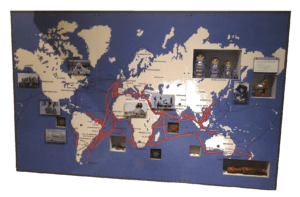
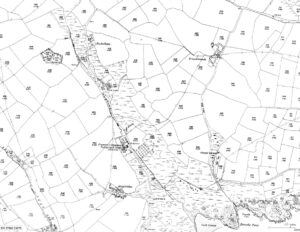
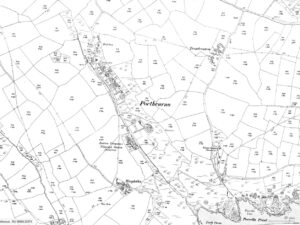
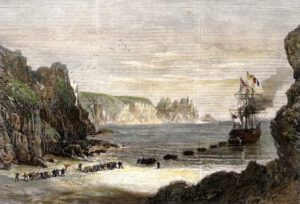
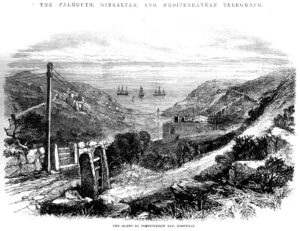
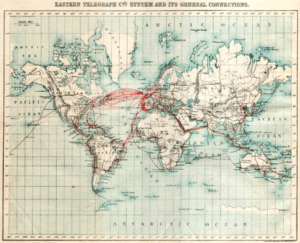
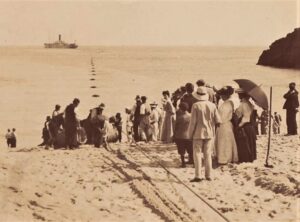
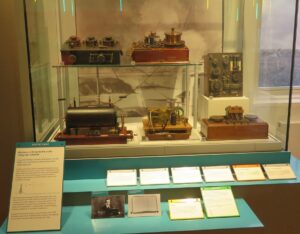
![Part of Truro Archaeology 'Dot Dot' Exhibition at Truro College Part of Truro Archaeology 'Dot Dot' Exhibition at Truro College [Dot Dot]](https://www.cornwallheritage.com/wp-content/uploads/2023/06/Part-of-Truro-Archaeology-Dot-Dot-Exhibition-at-Truro-College-300x234.jpg)
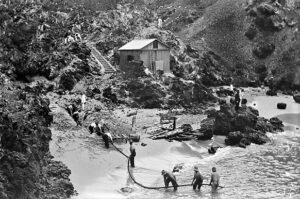
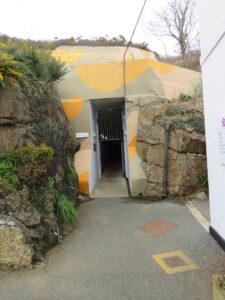
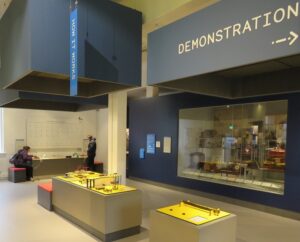
![Ertach Kernow - 14.06.2023 [1] Porthcurno. Centre of the worlds communications](https://www.cornwallheritage.com/wp-content/uploads/2023/06/Ertach-Kernow-14.06.2023-1-254x300.jpg)
![Ertach Kernow - 14.06.2023 [2] Porthcurno. Centre of the worlds communications](https://www.cornwallheritage.com/wp-content/uploads/2023/06/Ertach-Kernow-14.06.2023-2-254x300.jpg)
![[155] Ertach Kernow Heritage Column - 14th June 2023 - Golowan and More Ertach Kernow Heritage Column - 14th June 2023 - Golowan and More](https://www.cornwallheritage.com/wp-content/uploads/2023/06/155-Ertach-Kernow-Heritage-Column-14th-June-2023-Golowan-and-More-290x300.jpg)